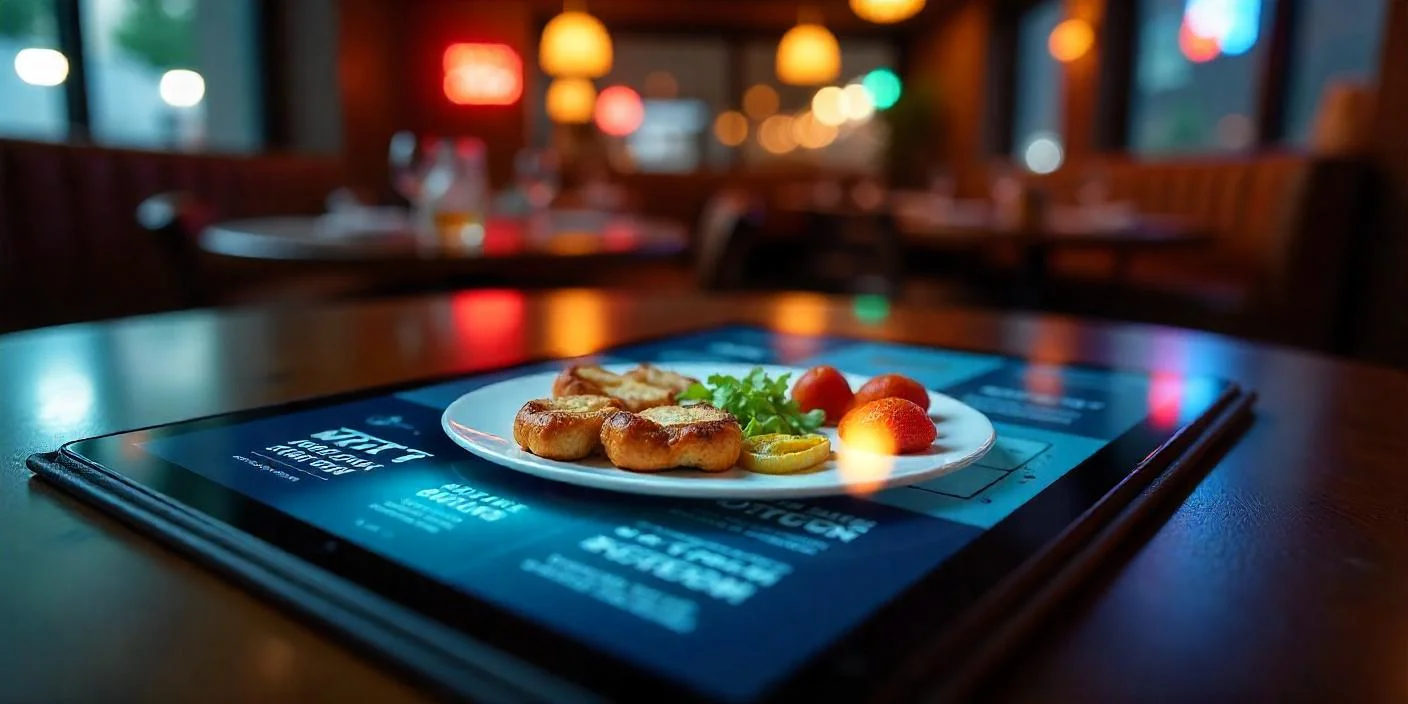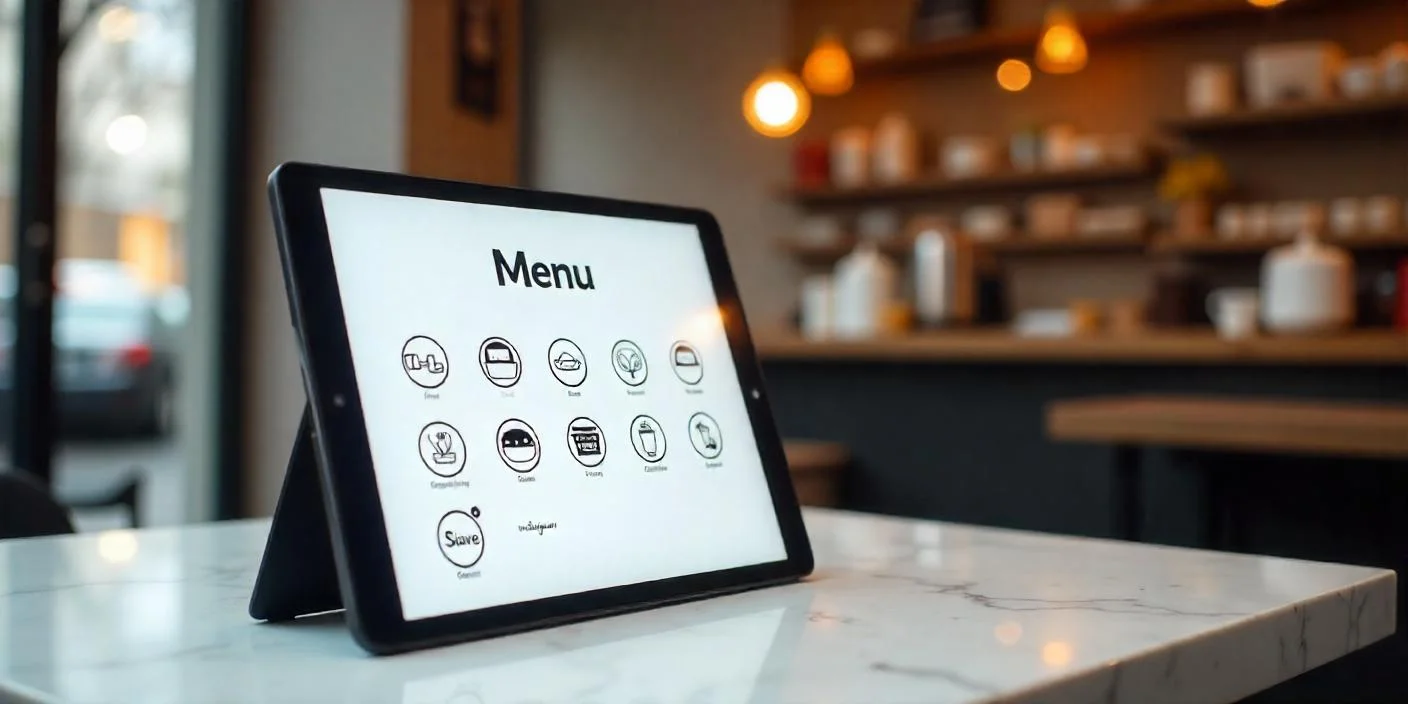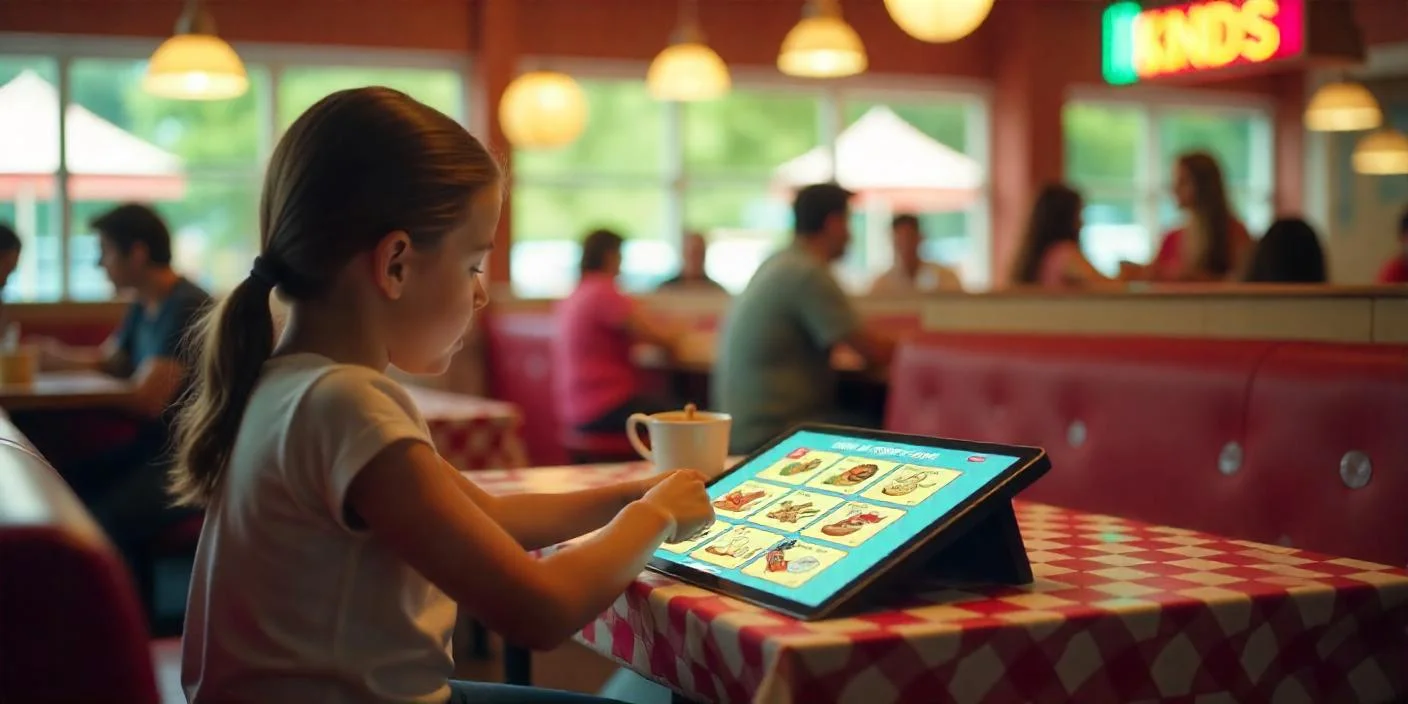Introduction
It is not an overstatement to say that the hospitality business is one of the sectors that is entirely transformed by technology to cater to the frequent changes in the business landscape. In this regard, the innovation that seems to transform the dining experience for people—both patrons and restaurateurs—is the digital table menu for restaurants. This blog will examine various elements of digital table menus, such as their benefits, implementation, and potential.

Understanding Digital Tablet Menus
What is a Digital Table Menu?
A Digital Table Menu, in a Digital Table Menu Format, is modern digital imagery on a screen instead of paper. Digital Table Menus are ordered from a tablet, a smartphone, or a digital menu unit installed with a tailored digital menu. Ordering food and drinks is done directly from the table, with an easy menu that can be navigated, the ability to customize an order, and an easy way of ordering it with fast delivery methods.
The Evolution of Restaurant Menus
Restaurant food menus have come a long way from handwritten perspectives on chalkboards to currently printed menus. The latest in this series is the digital table menu, which integrates technology to allow consumers an interactive dining experience and aims at efficacies and real-time updating.
Key Features of Digital Table Menus
Digital table menus provide numerous features that typical menus would never be able to stand up to:
· Interactive Display: High-quality images of dishes with detailed dish descriptions.
· Customization Options: Empowering to modify or alter orders as per dietary preferences.
· Real-Time Updates: Receive updates on product availability and promotions in real-time.
· Multilingual Support: Menus in various languages to ensure that all types of clients are catered to.
· Integration with POS Systems: Orders are processed accurately with correct pricing.
Benefits of Digital Table Menus for Restaurants
Enhanced Customer Experience
Digital menu tables make it better for diners to see the dishes, especially the pictures and descriptions, making it easier to create customized orders. Such a level of interaction adds to the quality of the dining experience.
Increased Efficiency and Accuracy
The digital table menu automates ordering, eliminating any possible error arising from miscommunication between staff and customers. Every order placed goes straight to the kitchen, therefore not only giving assurance of accuracy but also speeding up service. Such an arrangement could increase the number of customers served and, ultimately, more table turnovers, boosting sales.
Cost Savings and Environmental Benefits
The initial investment for digital tabletop menus is expensive, but the savings are also incredibly high in the long run. Restaurant owners will no longer have to spend the money currently used to print paper menus or the waste they create. In addition, the real-time updating implemented on the menu is right there, with no carbon footprint from reprinting.
Data-Driven Insights
Digital table menus provide insight into customers’ preferred interests and order patterns. This information can be utilized to optimize the offered menu listing, devise targeted promotional strategies, and add value to operations. The insights gained will lead to the creation of more targeted promotions and improved customer retention.
Enhanced Hygiene and Safety
Hygiene and safety are now diners’ top priorities in a post-pandemic scenario. Digital table menus are a step toward minimizing physical contact—and therefore germ transmission—from handling a menu. This new, contactless approach matches well with modern health and safety protocols that make patrons much more comfortable.

Implementing Digital Table Menus in Your Restaurant
Choosing the Right Technology
Choosing the right technology is critical to the success of digital table menus. There are options on the market, from dedicated tablet computers to QR-based systems accessible by customers’ smartphones. Consider ease of use, integration with existing systems, and cost.
Human-centered Design and User Experience
A good digital table menu design should be intuitive, attractive, and easy to navigate. It should be well-organized with high-quality photos and clear descriptions. Responsive customer feedback during the design process will help ensure an interface that is easily navigated and meets the visitor’s high expectations of a seamless dining experience.
Staff Training and Adaptation
Technology has radicalized; hence, even digital table menus will require intensive training for new recruits. They must be tech-savvy to guide customers and troubleshoot. This will also bring cultural adaptability and a change in attitude toward technological changes, which will make operations much smoother.
Marketing and Promotion
It is essential to adequately market the new digital table menu to inform customers of the system. To encourage customers, allow promotions and discounts with the use of a virtual menu. Communicate the benefits via social media, email marketing, and in-house signage.
Monitoring and Feedback
It would be important to keep a close eye on the system and seek feedback from regular customers for any improvements. Using usage data and fixing problems on the go may help to fine-tune the system and improve the overall experience.
Challenges and Considerations
Initial Investment and Costs
Some initial costs associated with introducing digital menu tables in restaurants have occurred. Investment costs in terms of hardware and software and the necessary training must be appropriately budgeted for. However, even more important are the potential long-term cost savings, which might more than compensate for the initial outlay.

Technological Dependence
But this again comes with the risks of technological dependence: system failures, connectivity problems, and cybersecurity hazards. For this, good technical support and security measures are supposed to be in place. System reliability can be maintained through regular maintenance and updates.
Customer Adaptation
Indeed, while most customers will have no problem with digital table menus, some will still resist them. Offering both options and simple printed menus on request will ensure all diners are catered for. Adequate communication and support for the staff will ensure that customers who are slow to accept change are catered for.
Legal and Compliance Issues
All data safety regulations and accessibility requirements must be considered during the execution of the digital table menu. This will be legal and in line with the requirements to enable all customer data to be handled securely while making the menu available to all, including people with disabilities.
Future Trends and Innovations
Integration with AI and Machine Learning
The future of digital table menus lies in their integration with AI and machine learning. For example, it will guide the customer appropriately based on their preferences and past order recommendations. This, in turn, will also assist in the menu design and optimize these menu pricing strategies.
AR Menus: The Augmented Reality
Augmented reality menus are poised to revolutionize the dining experience. Further, the AR menus accomplish an immersive nature that creates interactivity through an overlay of digital information in the real world. This way, even passersby could see 3D models of dishes, view nutritional information, and watch preparation videos.
Voice-Activated Menus
Another interesting development is the voice-activated digital table menu. This automatically creates an interface that is hands-free and accessible for ordering using voice commands, all realized through advanced voice recognition applications. It will satisfy various customer needs, including those of the disabled.
Blockchain for Supply Chain Transparency
Blockchain can apply transparency and traceability to the ingredients comprising the different menu items. By this means, blockchain can be integrated within digital table menus, allowing restaurants to gain customers’ trust and accountability for their food sources and sustainability.
Conclusion
A restaurant’s digital menu should no longer be considered a new technology fad; instead, it is closer to a transformational tool that changes a restaurant’s dining experience, operation, and customer appeal. In today’s highly dynamic global hospitality industry, adaptation to digital innovations such as the table menu is the solution toward gaining a competitive edge and evolving with modern diner expectations. By showing benefits, challenges faced by restaurateurs, future trends, and how to update themselves consistently, restaurateurs will lead themselves on ways to undertake the digital revolution to put their establishments on the next level.





